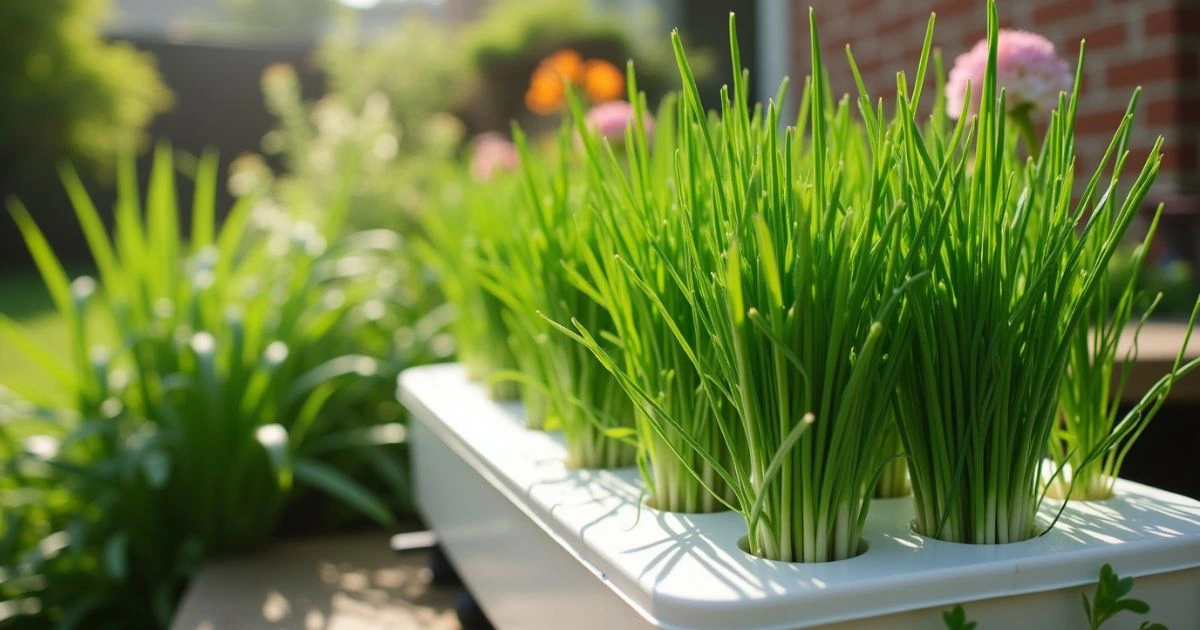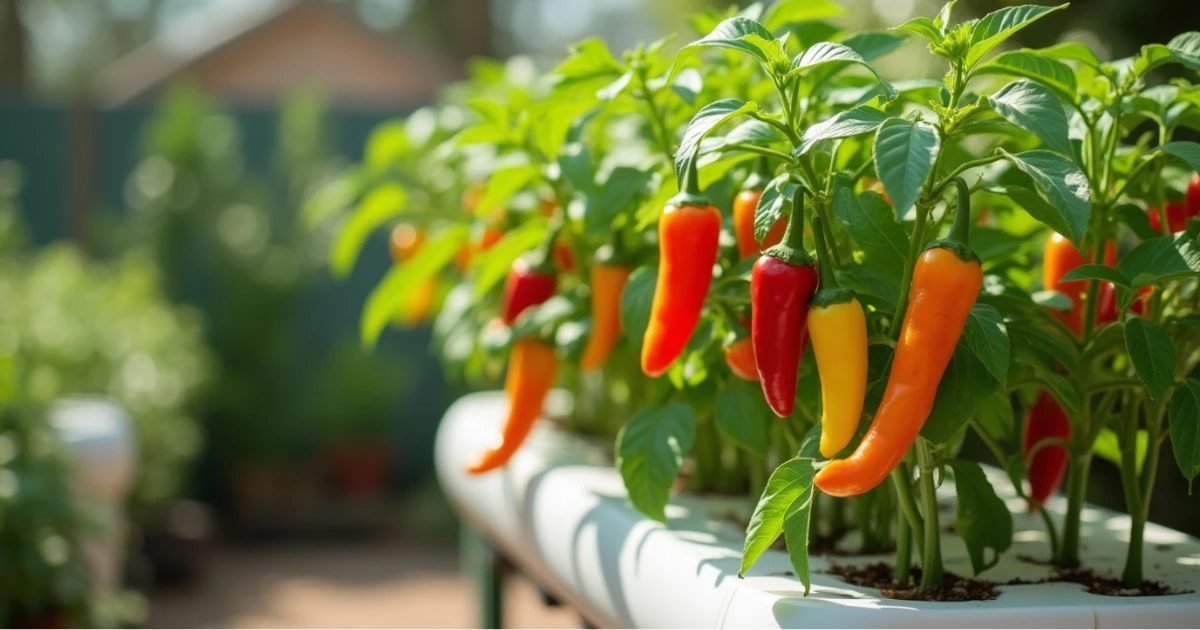Hydroponic gardening offers a unique opportunity to grow vibrant plants without the need for traditional soil. Whether you’re living in an apartment or want to expand your garden in a more sustainable way, hydroponics can be your gateway to healthier, fresher produce. For beginners, however, the question often arises: what are the best plants for hydroponics? In this guide, we’ll introduce you to 10 perfect choices for hydroponic gardening, offering valuable tips to help you get started.
Table of Contents
What Makes a Plant Ideal for Hydroponics?
Before diving into the specifics of hydroponic plants, it’s essential to understand the qualities that make a plant suitable for this method of gardening.
Hydroponics is the practice of growing plants in a nutrient-rich water solution, without the use of soil. As you consider your options, it’s important to select plants that are especially suited for this type of growth. The best plants for hydroponics typically exhibit the following characteristics:
- Adaptability to Water-Based Systems: Some plants thrive better in water than in soil, making them ideal for hydroponics.
- Fast Growth: Hydroponic systems are designed for rapid growth. Look for plants that grow quickly and efficiently in a controlled environment.
- High Nutrient Absorption: Plants that can efficiently absorb nutrients from water perform well in hydroponic setups.
Why Beginners Should Start with Easy-to-Grow Plants
If you’re new to hydroponics, it’s important to start with easy-to-grow plants. These plants will allow you to learn the ins and outs of hydroponic gardening while ensuring a successful first harvest.
Benefits of Growing Plants Hydroponically
As you begin your hydroponic gardening journey, it’s essential to understand why this method is so popular.
- Water Efficiency: Hydroponics consumes far less water compared to traditional soil-based gardening. The water is recycled within the system, leading to lower consumption and less waste.
- Space-Saving: You don’t need a large backyard to grow hydroponic plants. Many plants can flourish in small spaces, such as windowsills or countertops.
- Faster Growth: Without the constraints of soil, plants can grow more quickly and be harvested sooner, making it ideal for those who want a quick return on their investment.
- No Weeds or Pests: Hydroponic systems eliminate common gardening pests and weeds, allowing your plants to thrive without external threats.
Top 10 Plants for Hydroponics Beginners
Now that you know what makes a plant suitable for hydroponics and the many benefits of this gardening technique, let’s dive into the top 10 best plants for hydroponics, perfect for beginners.
1. Lettuce

Lettuce is a classic choice for hydroponic systems and for good reason. It grows quickly, doesn’t require much maintenance, and is a staple in any home garden. Whether you’re making fresh salads or garnishing dishes, lettuce is the perfect beginner plant.
- Hydroponics Tip: Lettuce thrives in cooler temperatures, making it an ideal candidate for your first hydroponic setup.
2. Basil

Basil is a must-have for any herb lover. This aromatic herb adds a burst of flavor to pasta, salads, and more. It grows well in hydroponic systems, and you can have fresh basil at your fingertips year-round.
- Hydroponics Tip: Basil loves warmth and requires a steady supply of nutrients. Make sure your system can provide both.
3. Spinach

Spinach is another excellent choice for hydroponics beginners. This nutrient-dense leafy green is easy to grow and perfect for hydroponic systems. Plus, spinach grows quickly, meaning you’ll see results in no time.
- Hydroponics Tip: Spinach thrives in slightly cooler conditions, so avoid placing it in direct sunlight for long periods.
4. Mint

Mint is another herb that flourishes in hydroponic systems. It’s low-maintenance and can grow rapidly, making it an excellent option for beginners.
- Hydroponics Tip: Mint grows rapidly, so make sure to control its growth and spacing to prevent overcrowding.
5. Strawberries

Growing strawberries hydroponically may take a bit more time than leafy greens, but the payoff is worth it. These sweet fruits grow well in an outdoor hydroponic system, and nothing beats fresh, homegrown strawberries.
- Hydroponics Tip: Strawberries require good pollination, so ensure your system includes bees or consider manually pollinating them.
6. Kale

Kale is a superfood that grows well in hydroponic systems. It is highly nutritious and fast-growing, making it an excellent choice for your hydroponic garden.
- Hydroponics Tip: Kale loves cooler temperatures, so it’s perfect for growing in the fall or winter months.
7. Tomatoes

Tomatoes are one of the most popular hydroponic plants, thanks to their versatility and flavor. They need a little more attention, but the effort is definitely worthwhile. Hydroponic tomatoes can yield impressive harvests in a short period.
- Hydroponics Tip: Ensure your outdoor hydroponic system provides ample sunlight and pollination for healthy tomato growth.
8. Chives

Chives are resilient, flavorful, and exceptionally easy to grow hydroponically. They’re ideal for small spaces and need minimal maintenance.
- Hydroponics Tip: Chives don’t need much light, making them perfect for a beginner’s indoor hydroponic system.
9. Peppers

Peppers, both sweet and hot, grow well in hydroponic systems. They grow faster than in soil and are perfect for anyone who enjoys adding a spicy kick to their meals.
- Hydroponics Tip: Peppers require steady warmth and plenty of light. An outdoor hydroponic system is ideal for peppers.
10. Cucumbers

Cucumbers are a refreshing vegetable that grows well in hydroponic systems. They need space to spread out, making them ideal for trellis systems in outdoor hydroponics.
- Hydroponics Tip: Cucumbers require a lot of light and moisture. Make sure your system has a consistent supply of both.
Quick Recipes Using Hydroponic Produce
Once your hydroponic plants are ready to harvest, it’s time to enjoy the fruits of your labor! Here are some simple recipes that feature hydroponic-grown produce.
Table: Fresh Hydroponic Salad Recipe
| Ingredient | Quantity | Notes |
| Hydroponic Lettuce | 2 cups | Washed and chopped |
| Hydroponic Basil | 5 leaves | Freshly picked |
| Hydroponic Tomatoes | 1 cup | Diced |
Table: Basil Pesto Recipe
| Ingredient | Quantity | Notes |
| Hydroponic Basil | 1 cup | Packed tightly |
| Olive Oil | 1/2 cup | Extra virgin |
| Garlic | 2 cloves | Minced |
How to Get Started with Hydroponic Gardening
Now that you know which plants to grow hydroponically, it’s time to set up your system. Here’s an easy guide to get you started:
- Choose Your Hydroponic System
There are several types of hydroponic systems available to choose from. As a beginner, consider starting with a simple Deep Water Culture (DWC) or Wick system. Both are simple to care for and perfect for small spaces. - Gather Your Supplies
You’ll need a hydroponic grow tray, a nutrient solution, a water pump (for certain systems), and grow mediums like clay pellets or rock wool. - Set Up Your System
Follow the instructions provided with your chosen system. Ensure the water level is optimal, and the plants are positioned correctly. - Plant Your Seeds
Start by germinating seeds in your hydroponic system. Once they sprout, transfer them to their permanent position. - Monitor and Maintain
Regularly check water pH levels, nutrient concentration, and light availability to ensure your plants thrive.
Frequently Asked Questions About Hydroponics
Which plants are best suited for beginners to grow hydroponically?
The ideal plants for hydroponic beginners include lettuce, basil, spinach, and mint. These plants are fast-growing and easy to care for.
Can hydroponic plants grow year-round?
Yes, hydroponic systems can facilitate year-round growth, particularly with the use of artificial lighting and temperature control.
What is the fastest-growing plant for hydroponics?
Lettuce is one of the fastest-growing hydroponic plants, reaching harvest time in as little as three weeks.
Are fruits harder to grow hydroponically than vegetables?
Fruiting plants like strawberries and tomatoes may require a bit more care, but with proper conditions, they can thrive in hydroponic systems.
Hydroponic gardening is more than just a trend; it’s a revolutionary way to grow your own fresh, healthy produce with minimal space, water, and effort. By focusing on the best plants for hydroponics, you can enjoy a seamless introduction to this soil-free gardening method, especially if you’re a beginner. Whether you’re growing lettuce for salads, basil for pesto, or strawberries for sweet treats, hydroponics opens up endless possibilities for cultivating plants indoors or outdoors, regardless of the season.
One of the biggest benefits of hydroponics is its versatility. From compact systems for your kitchen counter to outdoor hydroponic systems that can yield larger harvests, this method fits into any lifestyle or environment. Even with limited space or in an urban environment, you can establish a flourishing garden that offers fresh produce throughout the year.
Not only does hydroponic gardening offer practical benefits like faster plant growth, fewer pests, and less water usage, but it also provides an opportunity to connect with nature in an innovative way. Watching your plants grow, thrive, and eventually end up on your plate is both rewarding and sustainable. It’s a way to take control of the quality of your food while reducing your environmental footprint.
Starting with beginner-friendly plants like lettuce, basil, and spinach ensures that you can achieve success quickly and build confidence in your hydroponic skills. Once you’re comfortable, you can experiment with more complex crops like tomatoes, cucumbers, or even peppers, expanding your garden and your culinary options.
If you’ve been considering hydroponics, now is the perfect time to start. With the tips, techniques, and plant recommendations provided in this guide, you’re well-equipped to begin your journey. Take that first step, set up your system, and experience the joy of fresh, flavorful, and sustainable gardening.
So, what are you waiting for? Dive into the exciting world of hydroponics today and transform the way you grow and enjoy your food. Your future garden is only a few steps away from becoming a reality!



1 thought on “Best Plants for Hydroponics: 10 Perfect Choices for Beginners”